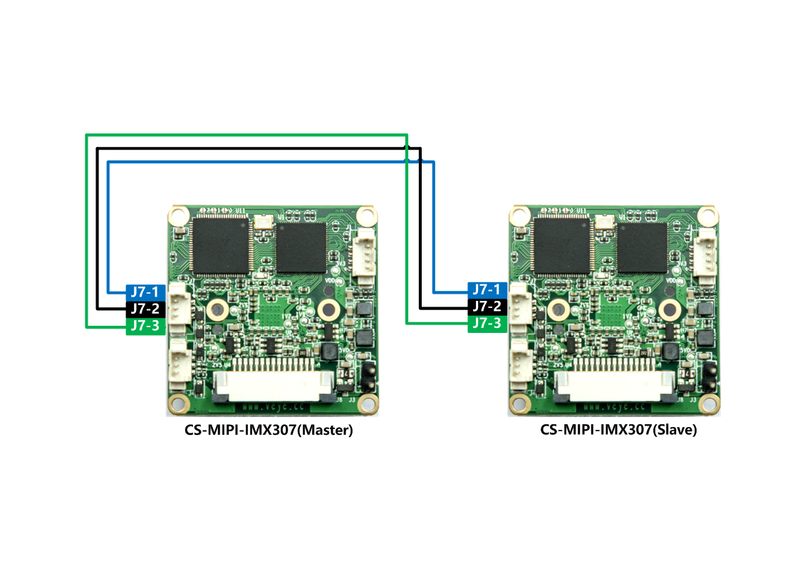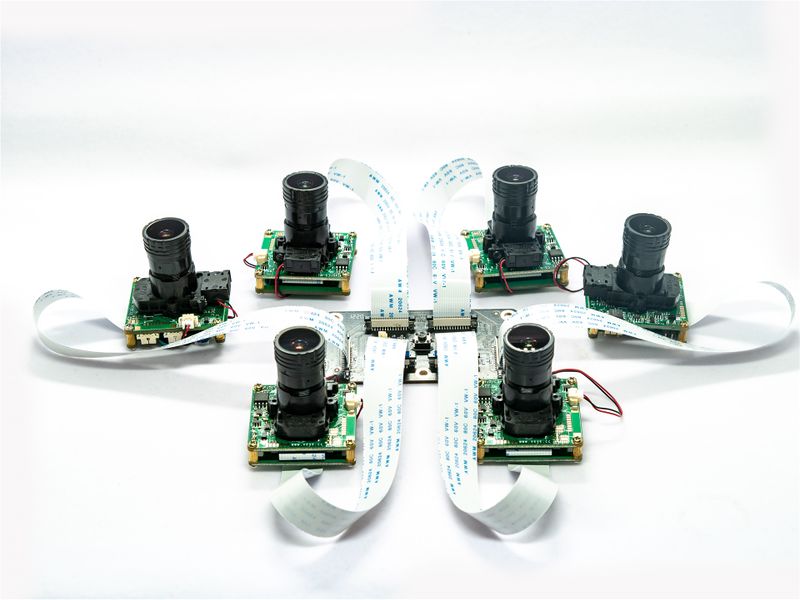Difference between revisions of "Camera module Stream Mode manual"
| Line 3: | Line 3: | ||
===Applicable Product models=== | ===Applicable Product models=== | ||
CS-MIPI-IMX307 | CS-MIPI-IMX307 | ||
| − | ===The concept of | + | ===The concept of image synchronization mode === |
====free running==== | ====free running==== | ||
In this mode, the camera module runs on its own. | In this mode, the camera module runs on its own. | ||
Revision as of 11:44, 19 June 2020
1 Applicable Product models
CS-MIPI-IMX307
2 The concept of image synchronization mode
2.1 free running
In this mode, the camera module runs on its own.
2.2 stream sync mode
One camera module is configured in master mode, and the other camera modules are configured in slave mode.
The camera module in master mode outputs XVS and XHS signals, while the camera module in slave mode follows the master module for exposure and output data.
In this mode, the exposure parameters of the camera module can be configured manually or automatically.
3 Hardware connection of sync mode
According to the following config method, J7-1 is used as the XVS signal and J7-2 as the XHS signal.
XVS time sequence diagram:
3.1 The method of connecting two cameras
3.1.1 Jetson nano B01 config
Reference link:cs_mipi_i2c.sh usage
- set cam0 as master
./cs_mipi_i2c.sh -w -f streammode -p1 1 -p2 0 -b 7
- set cam1 as slave
./cs_mipi_i2c.sh -w -f streammode -p1 1 -p2 1 -b 8
3.2 Jetson TX2/Xavier 6 cameras sync mode connection and configration
3.2.1 Jetson TX2/Xavier config
Reference link:cs_mipi_i2c.sh usage
- set cam0 as master
./cs_mipi_i2c.sh -w -f streammode -p1 1 -p2 0 -b 30
- set other 5 cameras as slave
./cs_mipi_i2c.sh -w -f streammode -p1 1 -p2 1 -b 31
./cs_mipi_i2c.sh -w -f streammode -p1 1 -p2 1 -b 32
./cs_mipi_i2c.sh -w -f streammode -p1 1 -p2 1 -b 33
./cs_mipi_i2c.sh -w -f streammode -p1 1 -p2 1 -b 34
./cs_mipi_i2c.sh -w -f streammode -p1 1 -p2 1 -b 35


